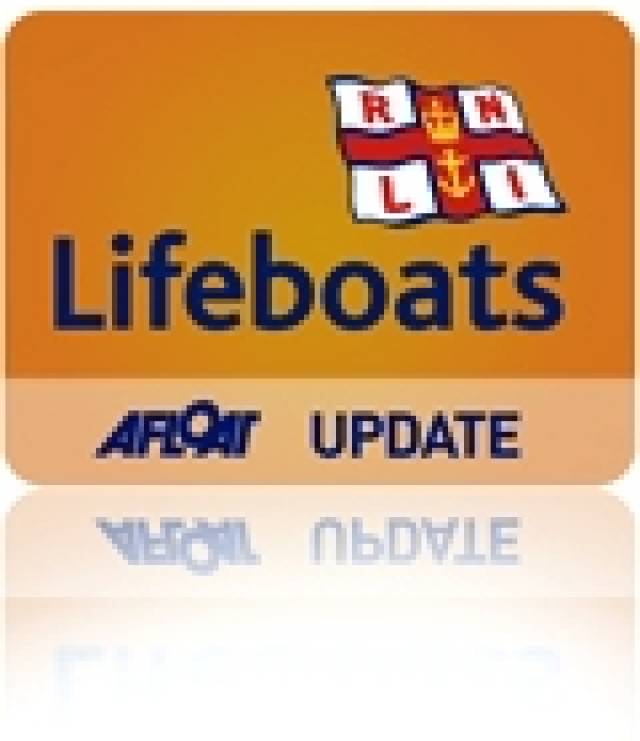At 09.20hrs on Thursday morning, June 30, Lough Derg RNLI lifeboat, Toshiba Wave Warrior, went to the assistance of a person, who had been stranded since the previous afternoon, when his vessel had grounded on rocks at the mouth of the river Shannon in Terryglass Bay, at the most northerly part of the lake. The skipper of the vessel is a diabetic.
At 09.05hrs, Thursday June 30, Lough Derg RNLI Lifeboat was requested to launch by Valentia Coast Guard, to assist a person whose vessel was on rocks close the mouth of the river Shannon, in Terryglass Bay. The lifeboat with helm Eleanor Hooker, Peter Clarke and Robbie Garland on board, launched at 09.20hrs. Winds were south-westerly, Force 2-3, visibility was very good. The lifeboat was alongside the casualty vessel, a 23ft cruiser, at 09.45hrs. There was one person and his faithful dog on board.
The vessel had been grounded since the previous afternoon, and the skipper and his dog had remained stranded overnight. The skipper, a senior individual, told crew that he had got into the water and made two attempts to get the boat off the rocks himself, but without success. The alarm was raised by a local who heard his calls for help.
When the lifeboat arrived on scene, the person was quiet but alert and able to give a full history of events, he had kept warm overnight. He was assessed by Lifeboat crew and didn't give any medical history.
With a lifeboat volunteer on board, the vessel was taken off the rocks and to a landing point at Portumna Bridge closeby, 10.10hrs. Lifeboat Operations Manager Charles Stanley-Smith had called ahead and asked Deputy Launching Authority Fergal Kerney, who was in the area, to meet the lifeboat with food and a warm drink for the casualty.
Two friends of the person, who had been looking for him after it was noticed that his vessel was not at its mooring, also met the lifeboat at Portumna Bridge. They informed crew that the person suffered from diabetes.
The person, alert and able, was given food and drink and immediately taken for a medical assessment. A Garda from Portumna Garda Station was also on scene and Valentia Coast Guard had an ambulance on standby should it have been required. The lifeboat returned to station and was ready for service again at 11.15hrs
































































